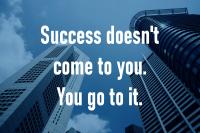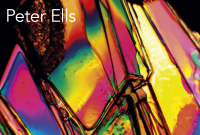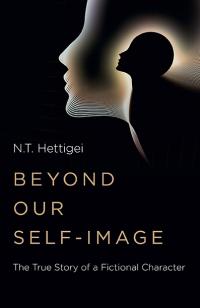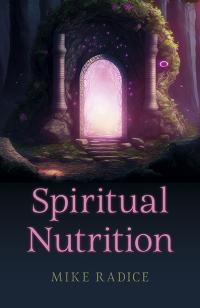
PART ONE – SCIENCE
The six essays in this section explore aspects of the history, philosophy and development of science, and try to gauge its potential for eventually accommodating the idea of consciousness being the kernel or “inside” of the so-called objective, material universe that mainstream science currently insists is the totality of reality. In their individual ways, our contributors argue that at its deepest, quantum-level roots, the material universe dissolves into a sea of energies and pure potential or virtuality, and that an abstract notion of matter isolated from consciousness is, essentially, an illusion. Our knowledge of reality is by definition subjective – the only way we know the universe is through the prism of consciousness, and even our scientific instruments are part of that process. Matter is apprehended by mind, not the reverse.
INTRODUCTION TO THE ESSAYS IN THIS SECTION
AMIT GOSWAMI: From Information to Transformation
Physicist Goswami meditates on mental information processing, on mental and emotional intelligence, and describes their limitations. He argues for a greater use of what he refers to variously as “transformational intelligence” or, citing Sri Aurobindo, “supramental intelligence”. This faculty allows a person to move “in the domain of archetypes” and even to transcend physical laws – to literally perform miracles. He complains that a deterministic materialistic worldview skews our understanding, relegating consciousness to the mere epiphenomenon of matter, concluding this to be a “faulty ideology”. He associates supramental intelligence with the principles of quantum physics, and claims that though we all naturally possess supramental intelligence we allow it to lie dormant for one reason or another. He gives the reader some simple exercises to try out.
BERNARD HAISCH: Reductionism and Consciousness
After describing how modern science is beginning to glimpse “a deep connection between life and the universe”, astrophysicist Haisch goes on to note that despite the fact that consciousness is “the sina qua non of human existence” many scientists can nevertheless manage to argue that it does not exist. He suggests that this “reductionist materialism” is effectively a dogma, thus impervious to evidence. Haisch reminds us what modern science is actually telling us, invoking the electromagnetic quantum vacuum, and links it with the sum of human experience and wisdom. He concludes by challenging the scientific skeptics to cease denying the evidence of phenomena and experiences that contradict the reductionist-materialist paradigm, while at the same time issuing a request to the mainstream institutions of religion to stop replacing the search for truth with “dogma and fairy tales and pat answers”.
MARY F. SCHMITT: If All is Consciousness, What Then is my Body?
In seeking answers to the question posed in her essay title, neurophysiologist Schmitt takes us along with her down, down and down into the very fabric of the body and thus the very fabric of matter. She finds that the amount of “matter” that comprises her body could easily fit on the head of a pin. She then takes us down, down, down into the heart of that speck of matter to the truth that is at the end of all our journeys inwards.
DUANE ELGIN: Living Universe: Toward a New Perceptual Paradigm
The author provides a historical perspective to support his belief that the present time offers the potential to be a moment of cultural paradigm shift. He explains how the properties of the universe now being seen at the frontiers of modern science show it to be exhibiting the characteristics of all life – “unity, regeneration, freedom, sentience.” He argues that consciousness is present throughout.
ERVIN LASZLO: Elements of the New Concept of Consciousness
Laszlo feels that claiming all is consciousness or that all is matter are both reductionist viewpoints. Rather, he argues that both elements are fundamental from the beginning, that the universe is “bi-polar”, that mind and matter could be “distinct but complementary aspects of it”.
He observes that this “principle of complementarity” is recognized in quantum physics. In his view, the mental and physical aspects of the universe were “present in the primordial quantum vacuum”, the “prespace of the observed universe”. A body and brain is seen as matter from the outside but experienced as consciousness from the inside.
While tellingly pointing out that “contrary to widespread belief, there is no solid evidence that consciousness would be limited to an organism with an evolved brain”, he does not deny that the complex human brain has a highly evolved consciousness with “articulated images, thoughts and feelings”. He remarks that the human brain “has enormous and as yet unused information processing capacity” that promises a yet higher evolution of consciousness.
ELISABET SAHTOURIS: Prologue to a New Model of a Living Universe
This final essay in this section provides us with the bridge to the next. Paying close attention to the root meanings of words such as “science”, “physics”, and “cosmos”, Sahtouris gives a clear and concise view of the relationship between science and philosophy, detailing how the reductionist, materialistic modern model of the universe originated, developed and maintains itself. She highlights the paradox of eliminating the inventor of the machine-like universe in the materialistic approach. Although the “new sciences” of quantum physics and cosmology are refuting this view, the paradigm shift is still awaited. She lambasts science’s “lack of moral accountability”. She goes on in some detail to promote an “orderly model of the universe” – the very meaning of the word “cosmos” – a model that includes – all human experience.
ISBN: 978-1-84694-057-6, $24.95 / £11.99, paperback, 320pp
Categories:
0 comments on this article








